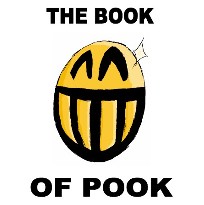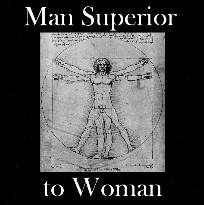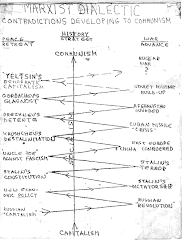That drew my heart a-nigh;
Not the fern-root potion,
But the glance in her blue eye."
As a means of inspiring and securing love, amatory potions and love charms of all kinds have been much in request amongst the fair sex; and even, at the present day, cases occur now and again of persons being fined for either selling, or persuading lovesick damsels to purchase, various mysterious compounds for influencing the affections of others. Going back to early times, it is well known that the Roman poet Lucretius took his life in an amorous fit caused by a love potion, and Lucullus lost his reason in the same way. In the Middle Ages love-powders were advertised for sale, the pernicious effects of which became a matter of serious comment.
Shakespeare has represented Othello as winning Desdemona by such means--
By spells of medicines bought of mountebanks."
To town with new-laid eggs, preserved in hay;
I made my market long before 'twas night,
My purse grew heavy, and my basket light.
Straight to the 'pothecary shop I went,
And in love-powder all my money spent.
Behap what will, next Sunday, after prayers,
When to the ale-house Lubberkin repairs,
These golden flies into his mug I'll throw,
And soon the swain with fervent love shall glow."
In the preparation of the love-philtre, much importance has been attached to the ingredients used in its composition, certain plants and animals having been supposed to be specially adapted for such a purpose. Italian girls, for instance, still practise the following method: A lizard is caught, drowned in wine, dried in the sun, and reduced to powder, some of which is thrown on the obdurate man, who thenceforth is hers for evermore. A favourite Slavonic device with a lovesick girl, writes Mr. Fizick, in his "Romantic Love and Personal Beauty," "is to cut the finger, let a few drops of her blood run into a glass of beer, and make the adored man drink it unknowingly. The same method is current in Hesse and Oldenburg; and in Bohemia, the girl who is afraid to wound her finger may substitute a few drops of bat's blood."
Another form of this mode of procedure practised by girls on the Continent is this: "Take a holy wafer, but which has not yet been consecrated, write on it certain words from the ring-finger, and then let a priest say five masses over it; divide the wafer into two equal parts, of which keep one, and give the other to the person whose love you desire to gain."
Flowers have been much in request as love-philtres, a favourite one having been the pansy. Oberon tells Puck to place a pansy on the eyes of Titania in order that on awaking she may fall in love with the first object she meets:--
The juice of it on sleeping eyelids laid
Will make a man, or woman, madly dote
Upon the next live creature that it sees."
Another mystic plant is the basil, which in Moldavia is said to stop the wandering youth on his way, and to make him love the maiden whose hand he happens to accept a sprig. Indeed, rarely does the Italian girl pay a visit to her sweetheart without wearing behind her ear a sprig of this favourite plant. The Mandrake, which is still worn in France as a love-charm, was formerly in demand by English girls for the same purpose, because, writes Gerarde, "It hath been thought that the root hereof serveth to win love." He also speaks of the carrot as "Serving for love matters," and adds that the root of the wild species is more effectual than that of the garden.
The root of the male-fern was, in days gone by, much sought for in the preparation of love-philtres, and hence the following allusion:--
That drew my heart a-night;
Not the fern-rood potion,
But the glance of her blue eye."
Dost point the five unerring shafts; to thee
I dedicate this blossom; let it serve
To barb thy truest arrow; be its mark
Some youthful heart that pines to be beloved."
To visit the bashful maid,
Steals from the jasmine flower, that sighs
Its soul, like hers, in the shade.
The dream of a future, or happier, hour
That alights on misery's brow,
Springs out of the almond silvery flower,
That blooms on a leafless bough."
Occasionally confidence was reposed in the power of written charms which were administered in drink, or food, to the person whose love it was desired to secure. Thus the story is told how a young man, passionately enamoured of a damsel of Gaza, having failed in the usual amatory charms, repaired to the priests of Aesculapius, at Memphis, from whom he acquired mystic powers. On returning after a year's absence, he introduced certain magical words and figures cut on Cyprian brass beneath the lady's door. The contrivance had the desired effect, for soon she began to rave on his name, "to wander with uncovered head, and dishevelled hair, for she had become distracted through the vehemence of love."
But cases of this kind were not always attended with the same success. We are told, for instance, how a Norwegian peasant, whose suit had been rejected, sought to inspire the lady he loved with corresponding affection by mystical means. So he carved Runic characters on pieces of wood; but not being sufficiently skilful in this mode of talismanic science, instead of furthering his purpose he threw the damsel into a dangerous illness. Fortunately, a Northern Chief witnessing his sufferings, and, hearing that Runic characters had been carved, sculptured those that he considered more appropriate, which, being placed beneath her pillow, soon restored her again to convalescence.
It is clear that there have been no lack of expedients either for inspiring or dispelling love, many an amusing instance being given in our old romances and folk-tales. It is a Basque superstition that yellow hair in a man is irresistible with a woman; hence every woman who set eyes on Ezkabi Fidel, the golden-haired, fell in love with him. We may compare a curious Irish piece of folk-lore which has long been practised. If a lover will run a hair of the object he loved through the fleshy part of a dead man's leg, the person from whom the hair is taken will go mad with love.
Such a practice may seem ludicrous, but it cannot be forgotten how great a hold it has on the female mind. How far this was originally due to the stories circulated is a matter of uncertainty; but it is generally admitted that tales dealing with the mystic powers of love, and handed down with every semblance of truth, have, in times past, largely helped to propagate a piece of folly which has been productive of so many mischievous effects.
Previous Index Next


















































